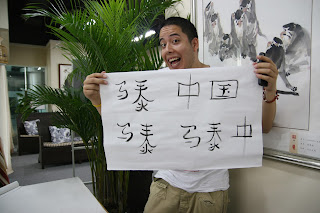With the outbreak of the Anti-Japanese War (1937-1945), on October, 1938,
the Japanese army occupied Guangzhou and Wuhan. Then, the government
of the Kuomintang (KMT) party withdrew to Chongqing from Nanjing, and
made Chongqing the temporary wartime capital. As a result, Chongqing
became the political, military, economic, and diplomatic center of China
at that time.
Chongqing, together with Washington in America, London in England, and
Moscow of the former Soviet Union, are recognized as the four famous historical
cities of the Allies in World War II. In addition, Chongqing played a significant
political role in the construction of the united line between the KMT and CPC.
During the 7 years of the Anti-Japanese War, many historic people, events, and
places were pushed onto the historical stage of China, reserving many peculiar
human cultural scenes for Chongqing.
As the temporary capital during the Anti-Japanese War, many historical places
were built in Chongqing and over 400 relics have survived, according to
incomplete statistics. However, due to the fast rate of construction in Chongqing,
many relics have been lost. Presently, the representative relics include the former
residences of such important persons as Chiang Kai-shek and Soong May-ling,
as well as the memorial museum for the second cooperative agreement between
the KMT and CPC, which held such documents as the Chongqing Negotiation
and the Double Ten Agreement.
The Huangshan Official Residence for Chiang Kai-shek on the South Mountain
in Chongqing has been better preserved for its incomparable integrity. During
the peace negotiation between KMT and CPC, Mao Zedong, the leader of
the CPC, accompanied by Zhou Enlai and Wang Ruofei, the representatives
of the CPC, flew to Chongqing and negotiated with the KMT in Hongyancun and
Guiyuan, etc. Guiyuan, originally the residence of General Zhang Zhizhong (KMT),
was prepared for Mao Zedong’s stay in Chongqing. On October 10, 1945, the Talk
Summary for the peace negotiation between KMT and CPC was signed exactly
at the living room of Guiyuan.
As the temporary capital during the Anti-Japanese War period, many industries
and schools were marshaled in Chongqing. Many famous enterprises today in Chongqing
developed from wartime initiatives. At the same time, many young,
patriotic students flooded into Chongqing to fight against the invasion of Japan.
Many cultural celebrities like Guo Moruo, Liu Yazi, Ma Yinchu, Tao Xingzhi,
Liang Shuming, Xu Beihong, and Lao She settled and worked in Chongqing.
Therefore, the culture in the temporary capital Chongqing was flourishing and
Chongqing became the cultural and educational center for the Sichuan province.
The cultural district Shapingba, gathering a lot of schools and universities,
became the famous “cultural dam” at the southwest and northwest area
during that time. The former building of the state-run Central University is
still standing on the campus of Chongqing University today.
First Published by cqnews
http://www.yourmandarin.org


















